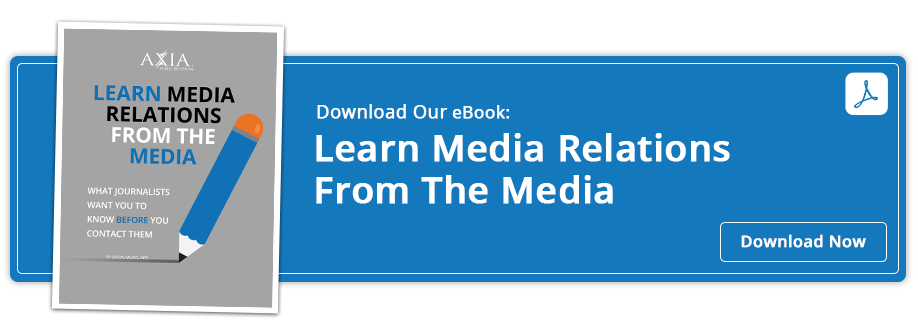Understanding designated market area (DMA) and how it impacts your company
By Lisa GoldsberryAugust 8, 2017
 Learn why the location of your company and customers mean so much for your visibility and brand position
Learn why the location of your company and customers mean so much for your visibility and brand position
When discussing media buys or target audience, your marketing team or public relations agency probably throws around terms like media region anddesignated market area (DMA). What do these things really mean for your business and bottom line? Understanding vital terms helps you make smarter, more informed decisions about what’s best for your business.
What is designated market area (DMA)?
Sometimes referred to as media market, broadcast market, media region, television market area – or even just market, DMA explains the area where the population can receive the same television, radio and broadcast channels. For example, Tampa, Florida, is in a different market than Orlando, Florida, even though they’re only about 80 miles apart.
How is it used?
The Nielsen Research Group (yes, the one that generates those dreaded Nielsen ratings) uses DMAs when compiling ratings to decide which shows stay on the air and which ones get cancelled. There are 210 DMAs nationwide. They’re usually separated by metropolitan area, with rural areas often being combined.
Viewing habits determine which DMA you’re in. To give an example, if most of the people in your county watch Baltimore television stations, your DMA is Baltimore, even though you might be located closer to Washington, D.C. Every area is in a DMA and there is no overlap.
DMAs also establish the cost of advertising in a particular area. That’s why it’s much more expensive to purchase a television ad in Los Angeles than one in Laredo, Texas.
What does all this mean for your company?
- The larger your media market, the more competitive the market and harder it is to create earned media coverage for your brand, products, services, ideas, etc. In other words, trying to attract media in New York City is more difficult than capturing media attention in Fairbanks, Alaska.
- Larger markets have more things happening so media have to be very selective about what they choose to cover. This means that even a significant, newsworthy event can fall through the cracks.
- If you're in those markets, generally speaking, there's a higher cost of everything. A higher cost of living, a higher cost to employ people, plus a higher cost for PR – and PR services can be tough on any budget.
- It’s not just cities. For instance, the Philadelphia DMA covers a majority of Delaware and southern New Jersey because those areas also get Philadelphia stations. If your company is in such an area, you must consider this when purchasing advertising, planning programs and building a media list.
How DMAs impact your PR initiatives
Reaching your ideal buyer persona with the right messages at the right time is the recipe for increasing lead conversions and brand loyalty. Now, with the popularity of cable television, the internet and social media, where people can watch stations and get news about practically any DMA they choose, this task has become more complicated than ever.
This also means significant changes to DMAs and how you reach your target audience. In fact, Nielsen is now looking to adapt its long-standing system to account for streaming services and network radio to get a more accurate picture. These actions, too, will affect how you plan for and purchase airtime.
It’s all a bit confusing, and a quality PR agency can help you. At Axia Public Relations, we evaluate audience data to get your news and information to the right media outlets, where it will be most beneficial. We strive to obtain real media coverage and articles, which consumers consider more credible and influential than advertising. To find out how we can increase your visibility and recognition, contact us today or download our e-book Learn Media Relations from the Media.
 Lisa Goldsberry is a blogger for Axia Public Relations with more than 15 years of public relations experience. She specializes in business and technology PR. Lisa has worked for Axia since December 2013. Learn more about Lisa Goldsberry. Connect with Axia on Twitter @axiapr or tell us what you think in the comments below.
Lisa Goldsberry is a blogger for Axia Public Relations with more than 15 years of public relations experience. She specializes in business and technology PR. Lisa has worked for Axia since December 2013. Learn more about Lisa Goldsberry. Connect with Axia on Twitter @axiapr or tell us what you think in the comments below.
Featured image credit: 123rf.com
Topics: media relations, public relations, media


Comment on This Article